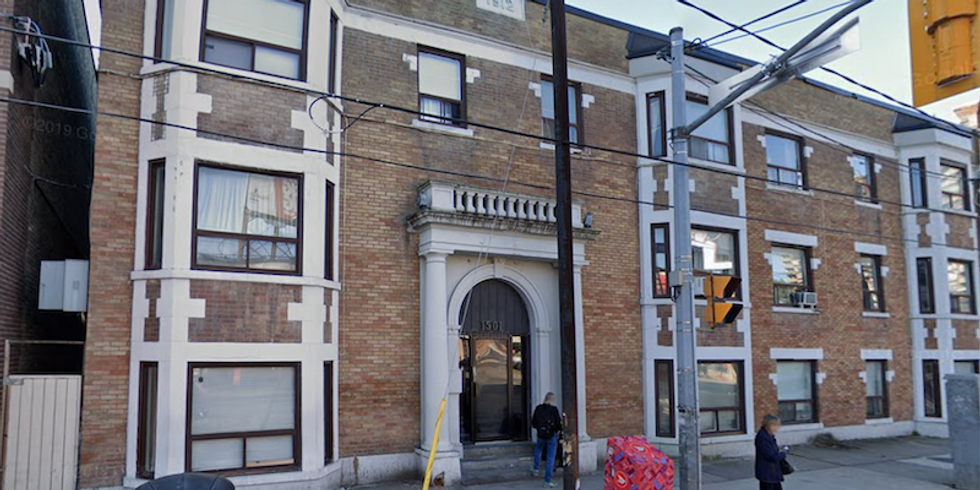Now that summer-like weather has arrived, more and more residents will be heading outdoors to enjoy the much-needed fresh air. In turn, the City has proposed expanding its network of cycling routes by adding an additional 25 kilometres of bike lanes.
On Monday, the City released a report that is set to be considered by council later this week, which proposes key parts of Toronto's cycling network be expanded through an accelerated installation of routes as part of the ActiveTO program.
READ: Where Every Single One of Toronto’s ‘Quiet Streets’ Are Located (MAP)
The report asks council to approve the installation of approximately 25 kilometres of new bikeways, which in addition to 15 kilometres of previously-approved projects slated for 2020, would create a total of approximately 40 kilometres of on-street cycling lanes approved for accelerated installation this year.
The proposed expansion includes flexibility so that bikeway installations can be adjusted based on considerations such as changing traffic volumes, and the evolving needs of residents and businesses in the wake of the pandemic. Additionally, most of the projects are proposed as "rapid installations with temporary materials and minimal change to the street design," except for the Danforth project between Broadview and Dawes, which would undergo "a more transformational Complete Streets approach."
If the report is approved the cycling network will be expanded quickly through temporary installations by repurposing curb lanes along several key corridors, with Bloor Street East, University Avenue/Queen's Park Crescent and Dundas Street East to be among the first installations.
The report also addresses other gaps in the network including locations in North York and Scarborough and includes acceleration of the Bloor West Bikeway Extension.
As part of the City's focus on main street revitalization in the wake of COVID-19, the City is also proposing to create more public space and patios, make a more beautiful street, and pilot active transportation infrastructure on the Danforth from Broadview Avenue to Dawes Road.
Councillor Mike Layton, Ward 11 University-Rosedale, said the City knows it needs to build an "expanded, city-wide grid of protected bike lanes, so that people can get to work and across the city without fear."
"Along with community groups and local residents, we have been advocating for a protected bike lane along these routes for some time. Now, it’s clearer than ever that we need to act – not just to protect cyclists, but to facilitate physical distancing and reduce virus transmission,” said Layton.

The report is looking for Council authority to install cycle tracks on Bloor Street West, from Shaw Street to Runnymede Road, in addition to the following ActiveTO cycling projects:
- Bloor Street from Avenue Road to Sherbourne St, Cycle Track
- Dundas Street East, from Sackville Street to Broadview Avenue, Cycle Track
University Avenue / Queens Park, from Adelaide Street to Bloor Street, Cycle Track
- Huntingwood Drive, from Victoria Park Ave to Brimley Road, Bicycle Lane
- Brimley Road, from Kingston Road to Lawrence Avenue, Cycle Track
Danforth Avenue, from Broadview Avenue to Dawes Road, Cycle Track
- Bayview Avenue, from River Street to Rosedale Valley Road, Multi-Use Trail
River Street, from Gerrard Street East to Bayview Avenue, Multi-Use Trail
- Wilmington Avenue, from Finch Avenue to Sheppard Avenue, Bicycle Lane
- Faywood Boulevard, from Sheppard Avenue to Wilson Avenue, Bicycle Lane
Council is set to vote on the report on Thursday, May 28.





















